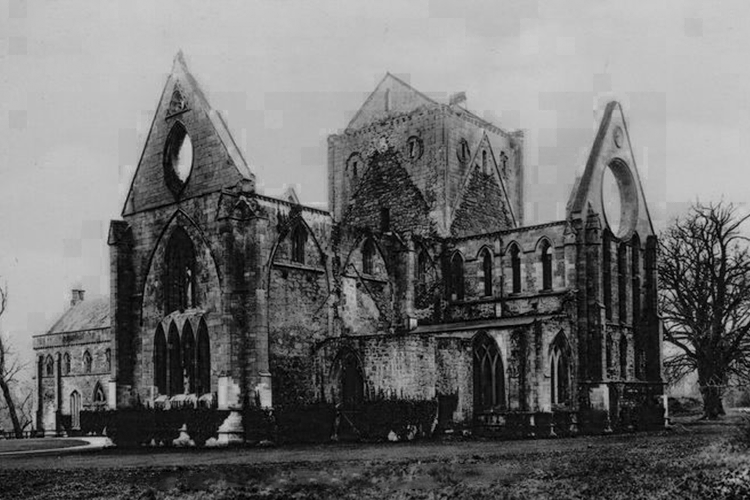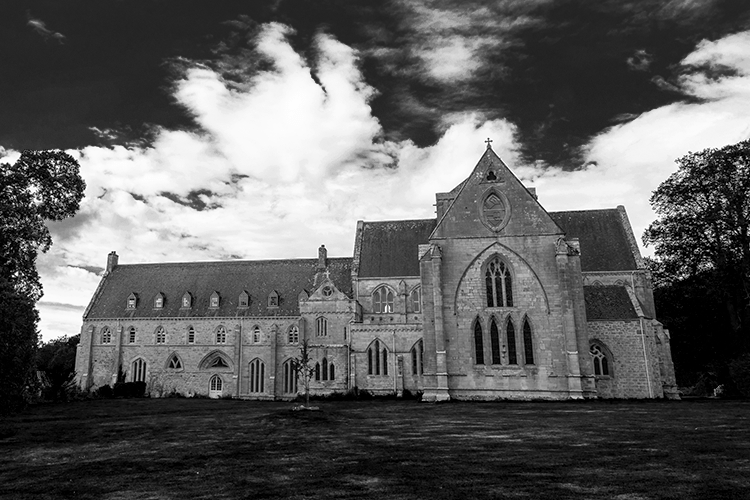A Religious Centre of Scotland
For hundreds of years, Moray has been one of the most important religious centres in Scotland. When people think of the church in Moray, it’s only natural they think of Elgin Cathedral. Once known as the Lantern of the North, those enormous walls are still impressive today, even as a ruin.
But when it comes to holy sites, Moray has so much more to offer and some fascinating stories to tell.
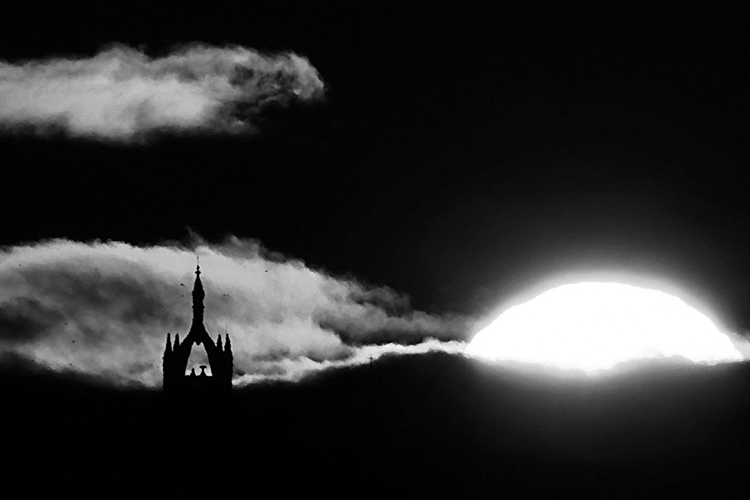
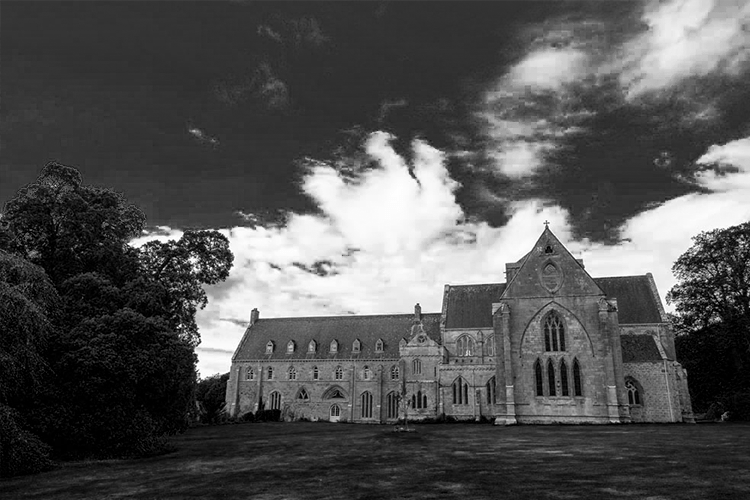
The Wizard of Gordonstoun
It’s not big or grand, but Birnie Kirk was once the cathedral of the Bishop of Moray. Founded in the mid-12th century, it’s also one of the oldest Scottish churches still in use today. Even after Elgin was well established, this little church was regarded as one of the holiest places in the region. That’s why it was sought as a sanctuary by the Wizard of Gordonstoun.
Living in the 17th century, Robert Gordon had travelled far and wide, scouring Europe for knowledge. The locals whispered that he had made a deal with the Devil, gaining knowledge in exchange for his soul.
In later years, Robert became paranoid. He constructed a circular building at Gordonstoun called the Round Square, with no corners for the Devil to hide in. Convinced that his payment was now due, he paid a priest to sit with him one night and ward off what was coming.
A storm whipped up and with the wind howling through the building, the priest fled. He shouted back at Robert that he would only be safe at the holiest of places – Birnie Kirk.
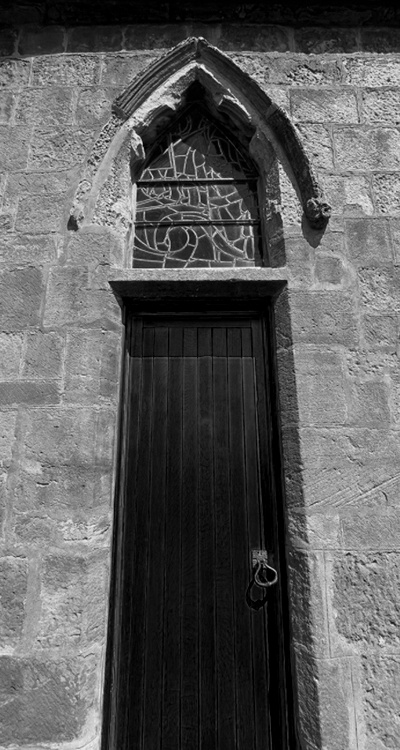
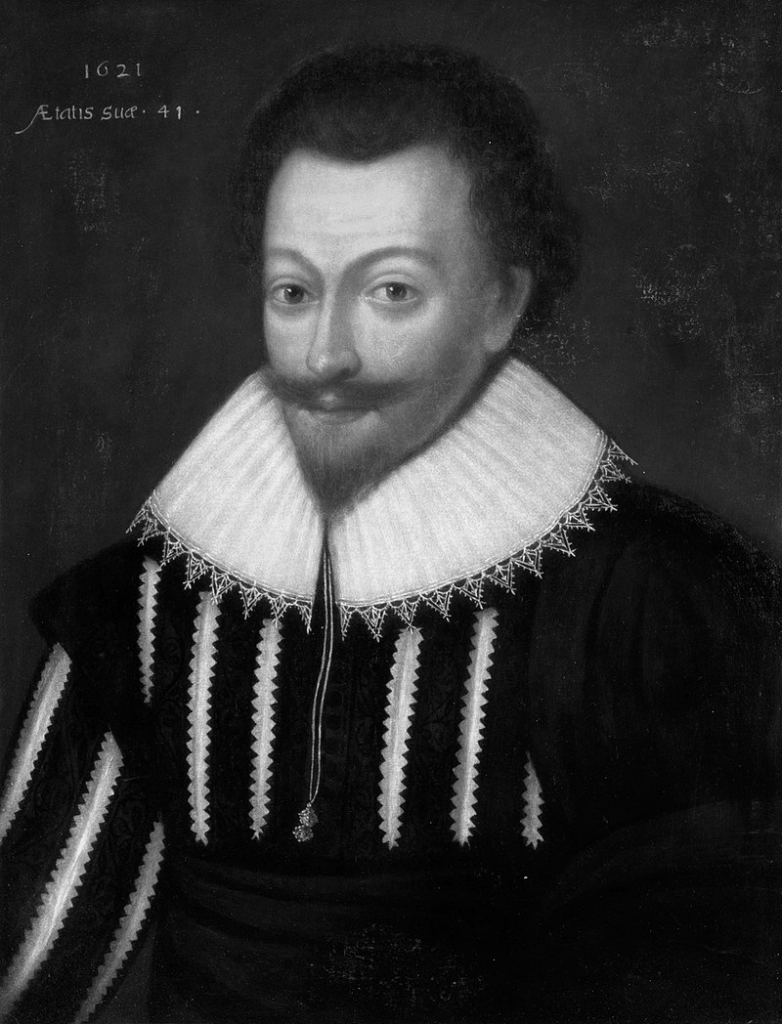
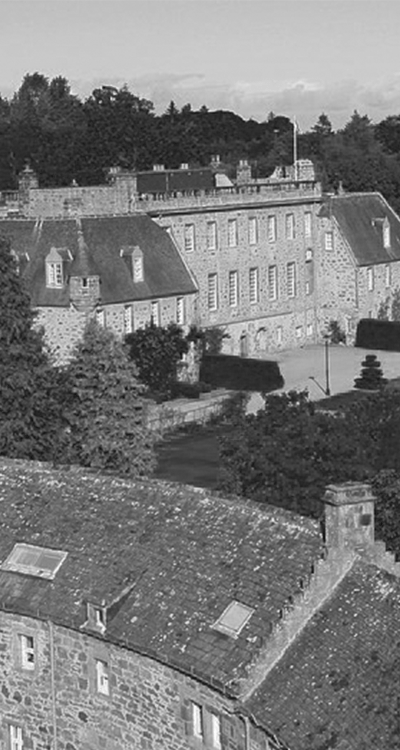
Robert rode fast, but a rider on a black horse was chasing him and Hellhounds snapped at his heels. Just as Birnie Kirk was almost within touching distance, those hounds pounced. The horse fell and Robert was thrown from the saddle, breaking his neck in the process.
The Wizard of Gordonstoun was dead, but the Devil didn’t get his prize. As a silver lining for Robert, his body had landed on the other side of the church wall, safely on consecrated ground. Even without being chased by the Devil, the feeling of peace surrounding Birnie Kirk is worth the visit.
The Oldest Church in Moray
Hidden away in a corner of Dufftown, Mortlach Kirk competes with Birnie for the title of oldest church in Moray. According to tradition, this religious site was established by St Moluag in the 6th century. Around 400 years later, the small church grew in importance thanks to a fierce battle and divine intervention.
The story is steeped in legend, but King Malcolm II may have faced down an army of Scandinavian invaders in the shadow of Mortlach Kirk. Things weren’t looking good for the Scots army to begin with though. At a crucial point of the battle, the King turned to the small church and promised God that if they won, he would transform it into a cathedral.
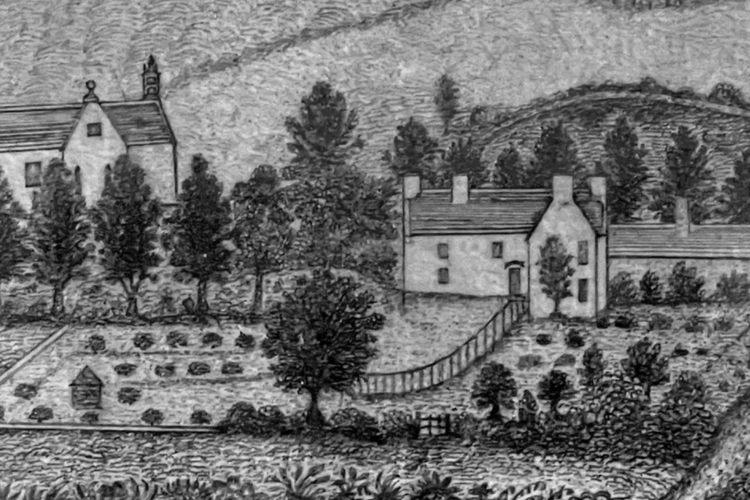
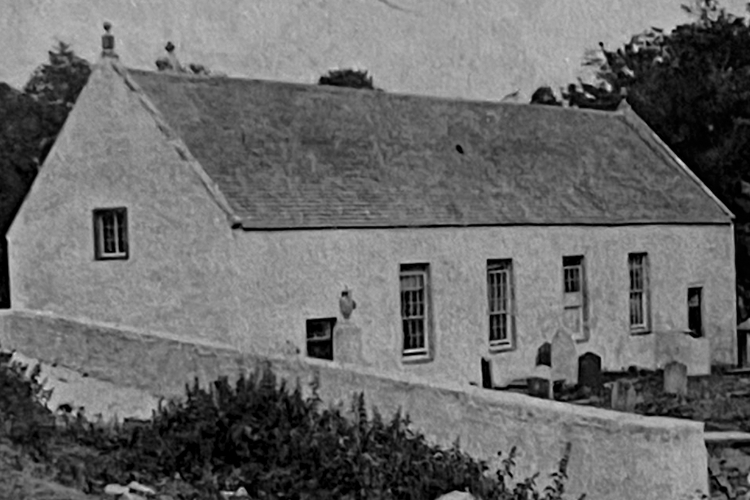
Fortunately for both Malcolm and Mortlach Kirk, the Scots won the day and the King extended the church by 3 spear lengths. That doesn’t sound like much, but he fulfilled his promise when Mortlach became home to the first Bishops of Aberdeen.
A carved Pictish symbol stone hides amongst the graves below the church, known as the Battle Stone. It’s too old to relate to King Malcolm II, but its placement still shows that Mortlach Kirk was an important early site in Moray.
Medieval Monasteries
Small, historic churches aren’t the only places worth visiting. This rich area was perfect for medieval monastic orders to establish their impressive abbeys.
Kinloss Abbey was founded by King David I in 1150, supposedly in thanks for a lifesaving miracle. The King was on a hunting trip at Duffus Castle when he found himself separated from his companions. Eventually, David accepted that he was hopelessly lost and prayed to God for guidance.
A dove appeared and led the King to some local shepherds where he spent the night. David dreamt that he should establish a new abbey in thanks, and the next morning marked out the walls on the ground with his sword. Returning to Duffus Castle, he sent for the best architects and masons to oversee construction of Kinloss Abbey.
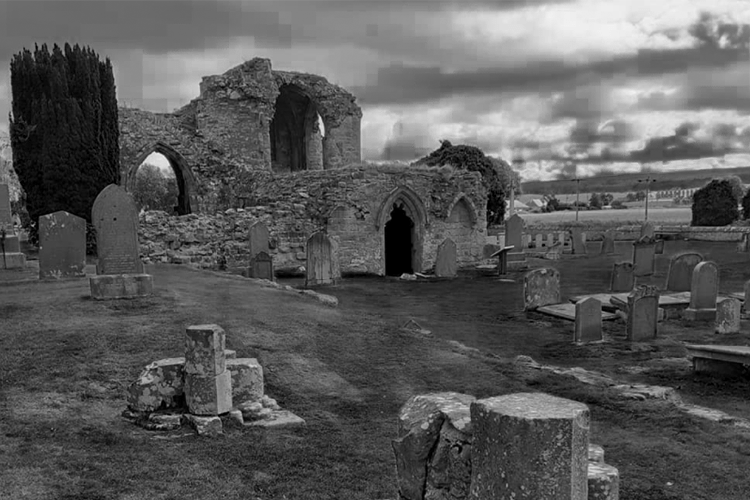
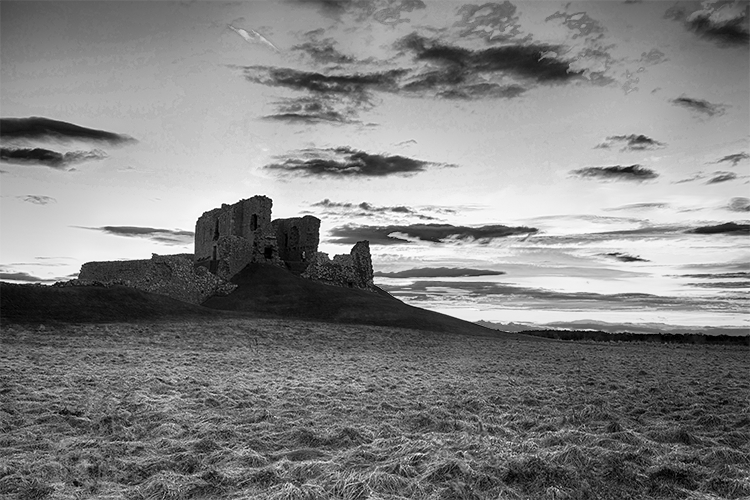
As the wealth and size of Kinloss Abbey grew larger, the inhabitant’s adherence to their religious vows wavered. The 15th century saw this holy site embroiled in scandal. Rumours of immoral behaviour from the abbot and his monks was rife and in 1492, a young boy was killed in the cloister.
Shortly after the scandals came the destructive Scottish Reformation, but the final downfall of Kinloss Abbey would be Oliver Cromwell. His men didn’t have to destroy the church buildings with their cannons though. The stone was willingly sold to them for construction of the Inverness Citadel leaving only a beautiful ruin behind.
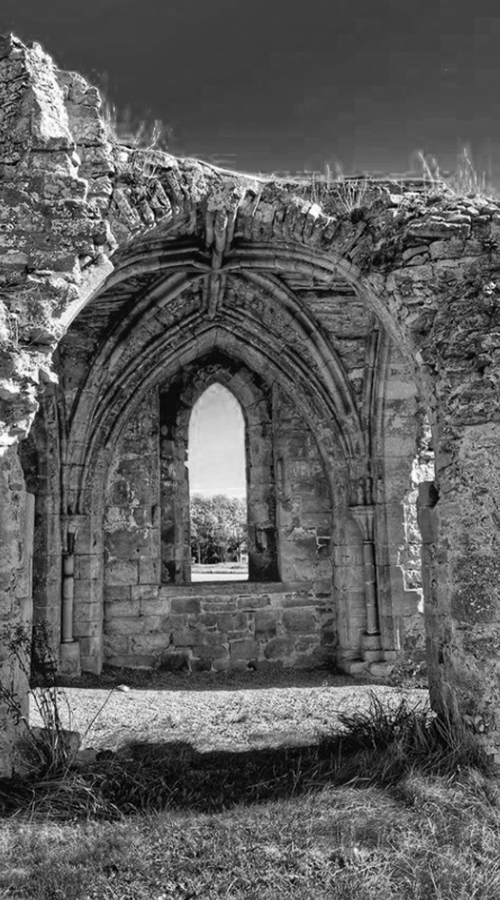
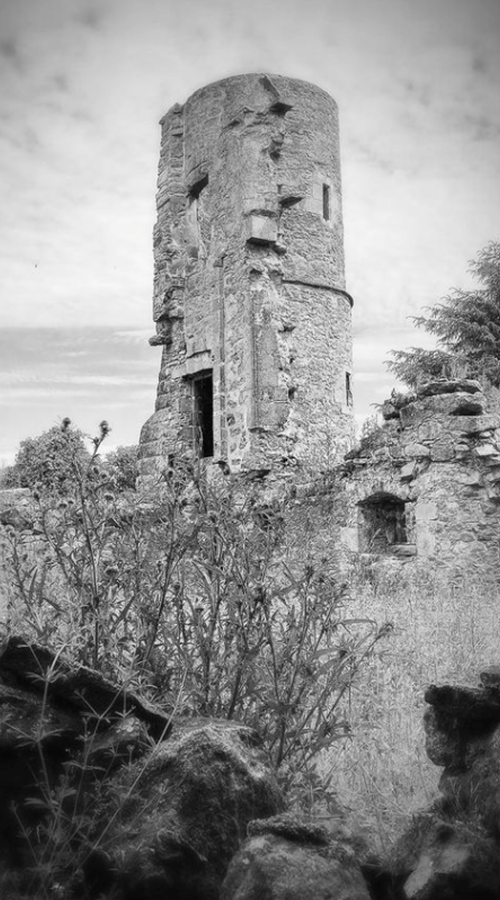
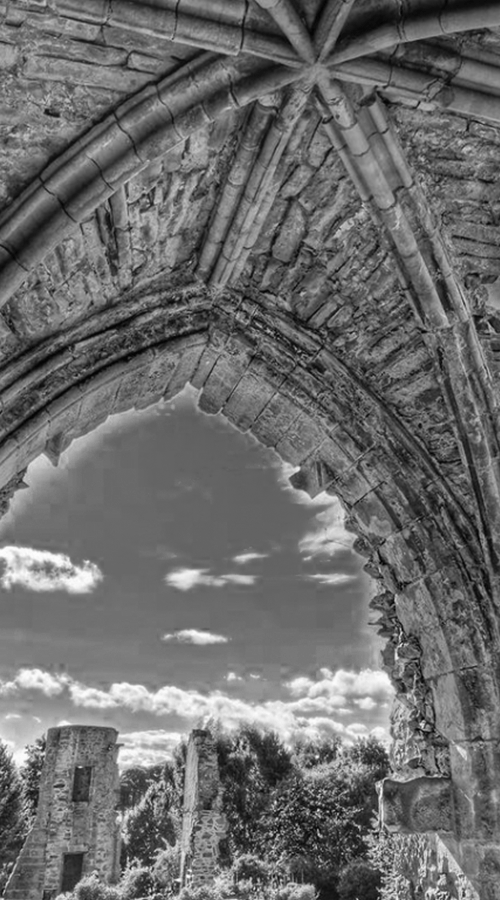
Almost all of Scotland’s great abbeys and priories were destroyed, but there is one still going strong in Moray.
Pluscarden Abbey
Pluscarden was initially founded as a priory in 1230 and filled with the French order of Valliscaulians. In the 16th century, it would follow the same fate as most of Scotland’s Catholic buildings. Roofs collapsed, wood rotted, and stone walls were quarried. It seemed certain that Pluscarden had seen its last monk.
Then everything changed when the 3rd Marquess of Bute bought the ruin in 1897 and set about resurrecting Pluscarden. His son Lord Colum gifted the site to a group of Benedictine monks in the 1940s and they completed this remarkable comeback story. Eventually, the monks were rewarded with the elevation of Pluscarden Priory to Pluscarden Abbey.
Today, the monks live a life not dissimilar to Pluscarden’s original inhabitants, growing their own crops and spending much of their time in prayer. The main difference is that the abbey welcomes members of the public for quiet retreats or short visits where they can just sit and listen to the Gregorian chants.
Nowhere else in Scotland can you experience a medieval monastery in the way it was intended almost 800 years ago.
These are only a few of the incredible holy sites that Moray has to offer. If you head just a little off the beaten track, you might be surprised by the stories waiting to be uncovered.
